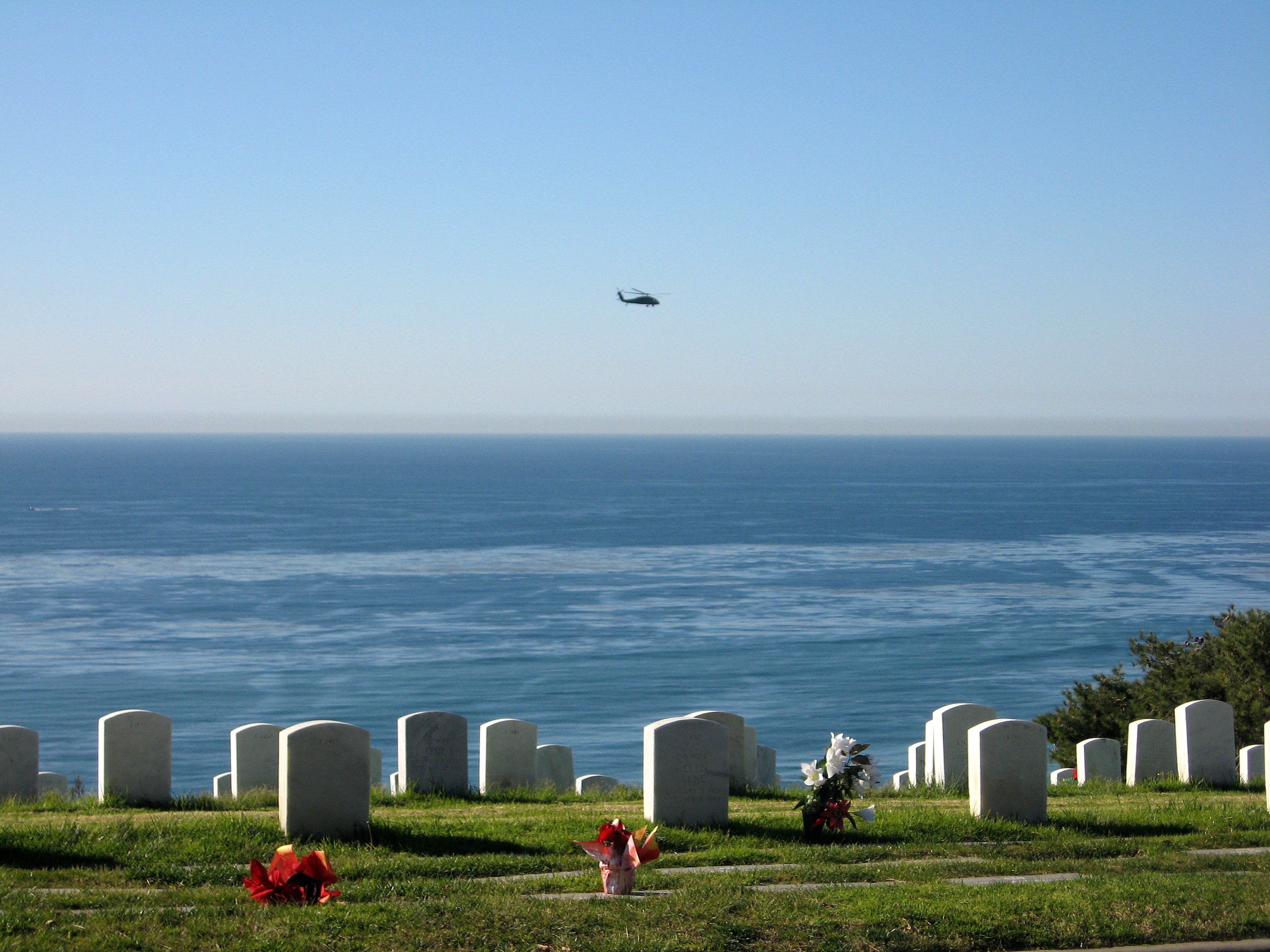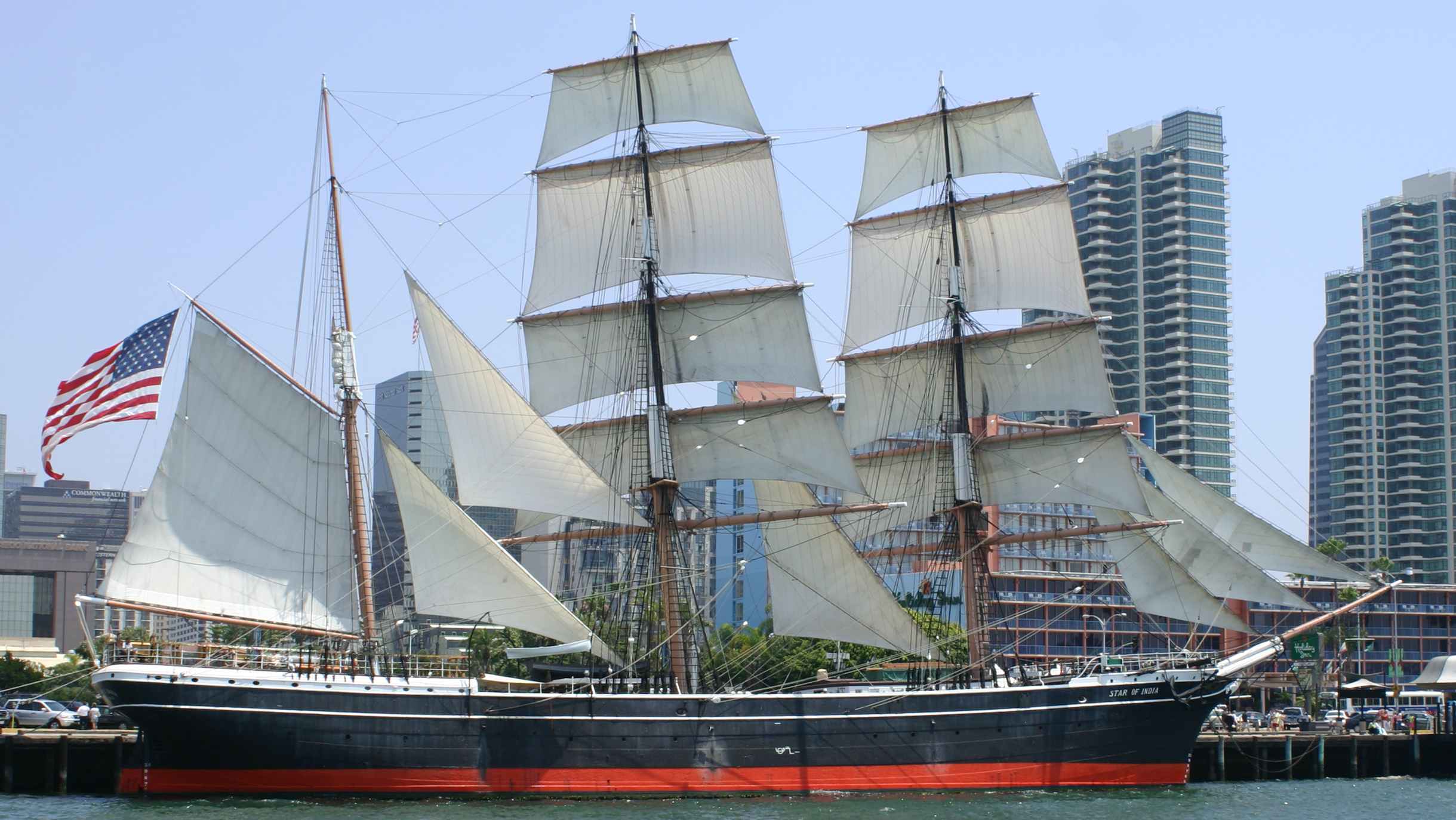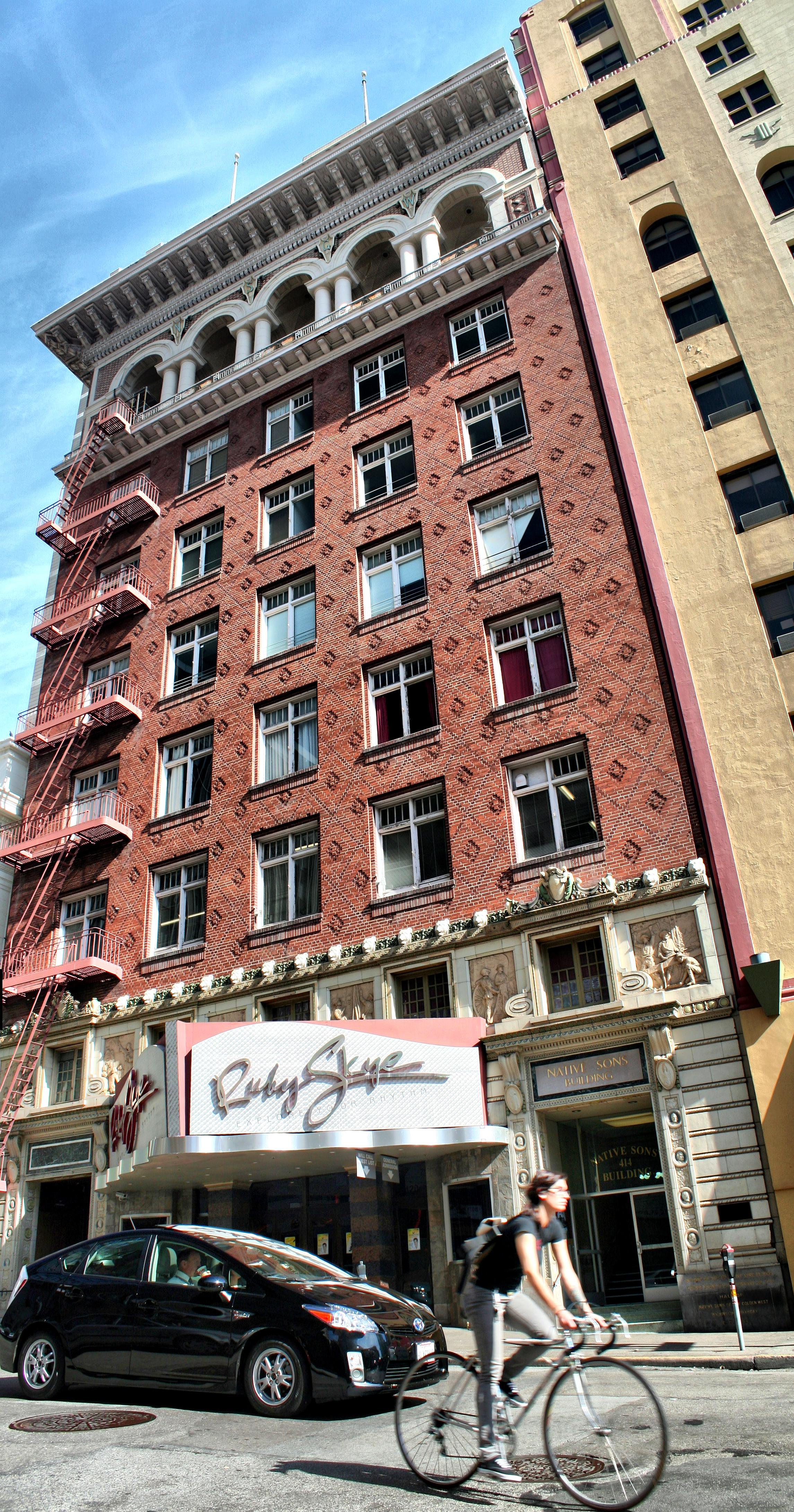|
Fort Rosecrans National Cemetery
Fort Rosecrans National Cemetery is a federal military cemetery in the city of San Diego, California. It is located on the grounds of the former Army coastal artillery station Fort Rosecrans and is administered by the United States Department of Veterans Affairs. The cemetery is located approximately west of Downtown San Diego, overlooking San Diego Bay and the city from one side, and the Pacific Ocean on the other. Fort Rosecrans is named after William Starke Rosecrans, a Union general in the American Civil War. The cemetery was registered as California Historical Landmark #55 on December 6, 1932. The cemetery is spread out over located on both sides of Catalina Blvd. History Many Fort Rosecrans interments date to the early years of the California Republic, including the remains of the casualties of the Battle of San Pasqual, in which 19 of Brigadier General Stephen W. Kearny's men and an untold number of Californios lost their lives. Initially, the dead were buried wher ... [...More Info...] [...Related Items...] OR: [Wikipedia] [Google] [Baidu] |
Point Loma, San Diego, California
Point Loma (Spanish: ''Punta de la Loma'', meaning "Hill Point"; Kumeyaay: ''Amat Kunyily'', meaning "Black Earth") is a seaside community within the city of San Diego, California. Geographically it is a hilly peninsula that is bordered on the west and south by the Pacific Ocean, the east by the San Diego Bay and Old Town, and the north by the San Diego River. Together with the Silver Strand / Coronado peninsula, the Point Loma peninsula defines San Diego Bay and separates it from the Pacific Ocean. The term "Point Loma" is used to describe both the neighborhood and the peninsula. Point Loma has an estimated population of 47,981 (including Ocean Beach), according to the 2010 Census. The Peninsula Planning Area, which includes most of Point Loma, comprises approximately . Point Loma is historically important as the landing place of the first European expedition to come ashore in present-day California. Point Loma houses two major military bases, a national cemetery, a nati ... [...More Info...] [...Related Items...] OR: [Wikipedia] [Google] [Baidu] |
California Historical Landmark
A California Historical Landmark (CHL) is a building, structure, site, or place in California that has been determined to have statewide historical landmark significance. Criteria Historical significance is determined by meeting at least one of these criteria: # The first, last, only, or most significant of its type in the state or within a large geographic region (Northern California, Northern, Central California, Central, or Southern California); # Associated with an individual or group having a profound influence on the history of California; or # An outstanding example of a period, style, architectural movement or construction; or is the best surviving work in a region of a pioneer architect, designer, or master builder. Other designations California Historical Landmarks numbered 770 and higher are automatically listed in the California Register of Historical Resources. A site, building, feature, or event that is of local (city or county) significance may be designated as a ... [...More Info...] [...Related Items...] OR: [Wikipedia] [Google] [Baidu] |
Mexican–American War
The Mexican–American War, also known in the United States as the Mexican War and in Mexico as the (''United States intervention in Mexico''), was an armed conflict between the United States and Mexico from 1846 to 1848. It followed the 1845 American annexation of Texas, which Mexico still considered its territory. Mexico refused to recognize the Velasco treaty, because it was signed by President Antonio López de Santa Anna while he was captured by the Texan Army during the 1836 Texas Revolution. The Republic of Texas was ''de facto'' an independent country, but most of its Anglo-American citizens wanted to be annexed by the United States. Sectional politics over slavery in the United States were preventing annexation because Texas would have been admitted as a slave state, upsetting the balance of power between Northern free states and Southern slave states. In the 1844 United States presidential election, Democrat James K. Polk was elected on a platform of expand ... [...More Info...] [...Related Items...] OR: [Wikipedia] [Google] [Baidu] |
Battle Of Guadalcanal
The Guadalcanal campaign, also known as the Battle of Guadalcanal and codenamed Operation Watchtower by American forces, was a military campaign fought between 7 August 1942 and 9 February 1943 on and around the island of Guadalcanal in the Pacific theater of World War II. It was the first major land offensive by Allied forces against the Empire of Japan. On 7 August 1942, Allied forces, predominantly United States Marines, landed on Guadalcanal, Tulagi, and Florida in the southern Solomon Islands, with the objective of using Guadalcanal and Tulagi as bases in supporting a campaign to eventually capture or neutralize the major Japanese base at Rabaul on New Britain. The Japanese defenders, who had occupied those islands since May 1942, were outnumbered and overwhelmed by the Allies, who captured Tulagi and Florida, as well as the airfield – later named Henderson Field – that was under construction on Guadalcanal. Surprised by the Allied offensive, the Japanese made se ... [...More Info...] [...Related Items...] OR: [Wikipedia] [Google] [Baidu] |
National Register Of Historic Places
The National Register of Historic Places (NRHP) is the United States federal government's official list of districts, sites, buildings, structures and objects deemed worthy of preservation for their historical significance or "great artistic value". A property listed in the National Register, or located within a National Register Historic District, may qualify for tax incentives derived from the total value of expenses incurred in preserving the property. The passage of the National Historic Preservation Act (NHPA) in 1966 established the National Register and the process for adding properties to it. Of the more than one and a half million properties on the National Register, 95,000 are listed individually. The remainder are contributing resources within historic districts. For most of its history, the National Register has been administered by the National Park Service (NPS), an agency within the U.S. Department of the Interior. Its goals are to help property owners and inte ... [...More Info...] [...Related Items...] OR: [Wikipedia] [Google] [Baidu] |
Miramar National Cemetery
Miramar National Cemetery is a federal military cemetery in the city of San Diego, California. It is located in the north west corner of the Marine Corps Air Station Miramar on the grounds of old Camp Kearney (1917) and Camp Elliott (1942). Miramar National Cemetery is considered an auxiliary of the Fort Rosecrans National Cemetery and is administered by the United States Department of Veterans Affairs. The cemetery is located about north of Downtown San Diego on Nobel Drive between Miramar Road and Interstate 805. History On 30 January 2010, the Department of Veterans Affairs dedicated a new National Cemetery at the northwest corner of MCAS Miramar. The cemetery is an extension of Fort Rosecrans National Cemetery and when complete will accommodate the remains of approximately 235,000 veterans and spouses. Nearby Fort Rosecrans Cemetery closed to most casket burials in 1966, and prior to Miramar's opening, the only option for casket burials of San Diego region veterans was R ... [...More Info...] [...Related Items...] OR: [Wikipedia] [Google] [Baidu] |
Veterans Administration
The United States Department of Veterans Affairs (VA) is a Cabinet-level executive branch department of the federal government charged with providing life-long healthcare services to eligible military veterans at the 170 VA medical centers and outpatient clinics located throughout the country. Non-healthcare benefits include disability compensation, vocational rehabilitation, education assistance, home loans, and life insurance. The VA also provides burial and memorial benefits to eligible veterans and family members at 135 national cemeteries. While veterans' benefits have been provided by the federal government since the American Revolutionary War, a veteran-specific federal agency was not established until 1930, as the Veterans Administration. In 1982, its mission was extended to a fourth mission to provide care to non-veterans and civilians in case of national emergencies. In 1989, the Veterans Administration became a cabinet-level Department of Veterans Affairs. The agenc ... [...More Info...] [...Related Items...] OR: [Wikipedia] [Google] [Baidu] |
San Francisco National Cemetery
San Francisco National Cemetery is a United States national cemetery, located in the Presidio of San Francisco, California. Because of the name and location, it is frequently confused with Golden Gate National Cemetery, a few miles south of the city. About 1937, San Francisco residents voted to no longer build cemeteries within the city proper and, as a result, the site for a new national cemetery was selected south of the city limits. The cemetery is one of only four officially existing within San Francisco city limits (the others being the Columbarium of San Francisco, the historic graveyard next to Mission Dolores, and the sarcophagus of Thomas Starr King). History When Spain colonized what would become California, this area was selected as the site for a fort, or presidio, to defend San Francisco Bay. About 40 families traveled here from northern Mexico in 1776 and built the first settlement, a small quadrangle, only a few hundred feet west of what is now Funston Avenue. Mex ... [...More Info...] [...Related Items...] OR: [Wikipedia] [Google] [Baidu] |
San Diego Harbor
San Diego Bay is a natural harbor and deepwater port located in San Diego County, California near the U.S.–Mexico border. The bay, which is long and wide, is the third largest of the three large, protected natural bays on California's of coastline, after San Francisco Bay and Humboldt Bay. The highly urbanized land adjacent to the bay includes the city of San Diego (eighth-largest in the United States) and four other cities: National City, Chula Vista, Imperial Beach and Coronado. Considered to be one of the best natural harbors on the west coast of North America, it was colonized by Spain beginning in 1769. Later it served as base headquarters of major ships of the United States Navy in the Pacific until just before the United States entered World War II, when the newly organized United States Pacific Fleet primary base was transferred to Pearl Harbor, Hawaii. However, San Diego Bay remains as a home port of major assets, including several aircraft carriers, of the Unit ... [...More Info...] [...Related Items...] OR: [Wikipedia] [Google] [Baidu] |
USS Bennington Monument
The USS ''Bennington'' Monument is a granite obelisk in the Fort Rosecrans National Cemetery, Point Loma, San Diego, California, United States. It serves as a memorial to the crew of the , a gunboat of the United States Navy The United States Navy (USN) is the maritime service branch of the United States Armed Forces and one of the eight uniformed services of the United States. It is the largest and most powerful navy in the world, with the estimated tonnage ..., whose boiler exploded on the morning of 21 July 1905, in San Diego Bay. The explosion showered the vessel with live steam and scalding water, killing 66 men (1 officer and 65 other sailors) and burning an additional 46. It was the worst peacetime disaster for the U.S. Navy up to that time. The dead were buried at Fort Rosecrans; some were later disinterred and shipped home for burial by their families. The monument at the site of the graves was dedicated three years later, on 7 January 1908. See also * O ... [...More Info...] [...Related Items...] OR: [Wikipedia] [Google] [Baidu] |
Native Sons And Daughters Of The Golden West
The Native Sons of the Golden West is a fraternal service organization founded in the U.S. state of California in 1875, dedicated to historic preservation, documentation of historic structures and places in the state, the placement of historic plaques and other charitable functions within California. In 1890 they placed the first historical marker in the state to honor the discovery of gold, which gave rise to the state nickname "Golden State" and "Golden West." Former U.S. President Richard M. Nixon and former Chief Justice Earl Warren were both past presidents of the NSGW. History The Native Sons of the Golden West was founded 11 July 1875 by General A. M. Winn, a Virginian, as a lasting monument to the men and women of the Gold Rush era. General Winn had lived in California during the Gold Rush and was impressed with the spirit and perseverance of the Forty-Niners. Speaking of his object in organizing the Order General Winn said, "For twenty years my mind had been running ... [...More Info...] [...Related Items...] OR: [Wikipedia] [Google] [Baidu] |
Californios
Californio (plural Californios) is a term used to designate a Hispanic Californians, Hispanic Californian, especially those descended from Spanish and Mexican settlers of the 17th through 19th centuries. California's Spanish language, Spanish-speaking community has resided there since 1683 and is made up of varying Spaniards, Spanish and Mexicans, Mexican origins, including Criollo people, criollos, Mestizos, Indigenous peoples of California, Indigenous Californian peoples, and small numbers of Mulatos. Alongside the Tejanos of Texas and Hispanos of New Mexico, Neomexicanos of New Mexico and Colorado, Californios are part of the larger Spanish-American/Mexican-American/Hispanos, Hispano community of the United States, which has inhabited the American Southwest and the U.S. West Coast, West Coast since the 16th century. Some may also identify as Chicanos, a term that came about in the 1960’s. The term ''Californio'' (historical, regional Spanish for 'Californian') was originall ... [...More Info...] [...Related Items...] OR: [Wikipedia] [Google] [Baidu] |





